Lutherie
Woods: I use only local woods from my region, sycamore mapple, spruce, pear tree, alder, lime tree, boxwood.
I generally propose spruce for instruments table, but more, for arched
table (Esquisse, Trilobée...) I propose maple wood for a warmer
sound.
For easier standing play, for ergonomy and the vibration of sound box, I propose to add a back bar:
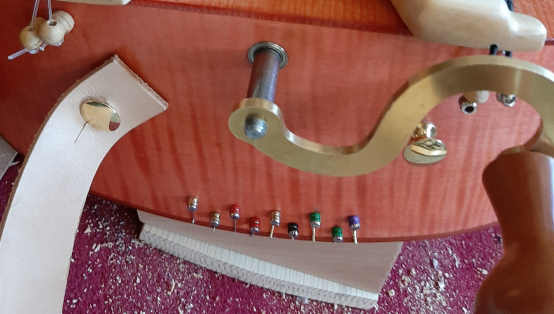
example of (proto) back bar on Esquisse for easier standing playing
.
Magnetic capos
Esquisse, Trilobée, Mersenne... are equipped with magnetic sliding capos. The
system is simple: the string is passing thru a magnetic button with can
slide on steel bar.
Wheel height setting:
This setting allow a quick correction of string/wheel pressure
|
Electroacoustic or electric vielles
Sensors
We propose 2 category of sensors:
-piezo
sensors: they economic, easy to use, and give good sound when they are
well amplified. These sensors transmit wood vibration so its impossible
to diferentiate sounds sources (trumpet/ melody/drone).
-magnetic sensors: they are usable on steel strings and
on trumpets with a special assembly. So it is possible to put a sensor
by string, and to have the sound of a single string on an input.
2 sound system levels
Without preamp:
piezo sensors withe cable outputs.
With symetriser preamp:
This new preamp was developped for:
-impedance adaptation (better trebble bass balance),
-less noises with symetric signal,
-higher signal for magnetic sensors,
-no battery: it is powered directly by phantom on mix table
4 to 8 magnetic inputs, and 4 to 8 output on special cable.
Hermeline: see magnetic sensors below melodic strings
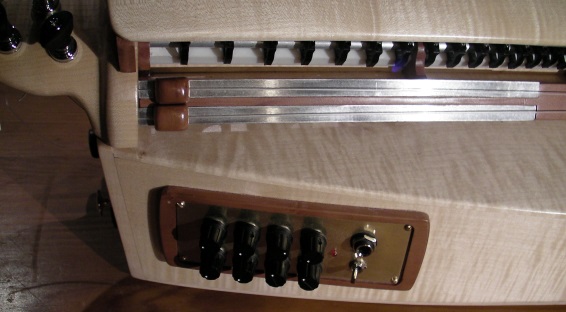
Ovoïde: see sliding capos on steel boards
|
|
The
creativity of the medieval luthiers is very amazing, and
instruments
whose inner workings are still very mysterious. Already done, the
reconstruction of the vielle painted by Georges de la Tour is my first
work in this direction. The biggest challenge was to imagine parts of
the instrument not represented by the iconography.
My
sources: Vielleur
au chapeau, Rixe
de musiciens and Vielleur au chien painted around 1650
by Georges de La Tour and Manuscrit du Zodiaque
(Lyon) from 15th century, in wich the vielle was chosen to illustrate
the
constellation of the Lyre.
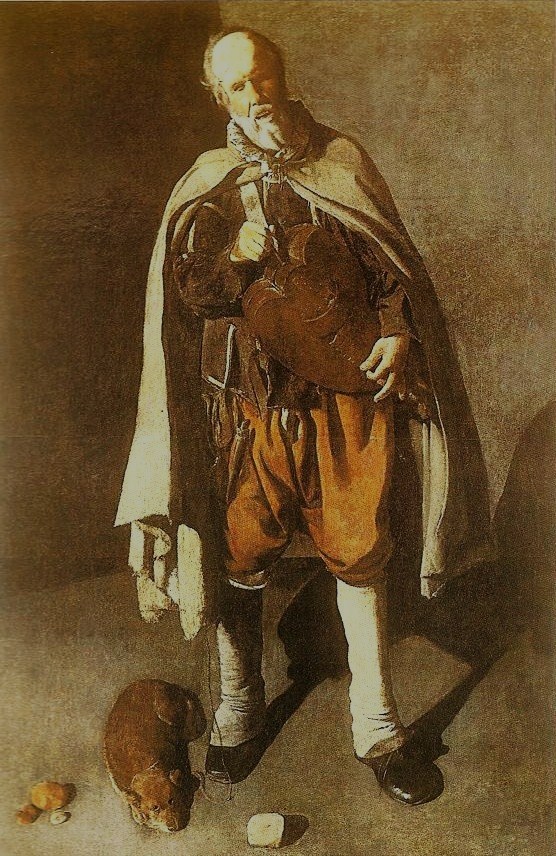
vielleur au chien
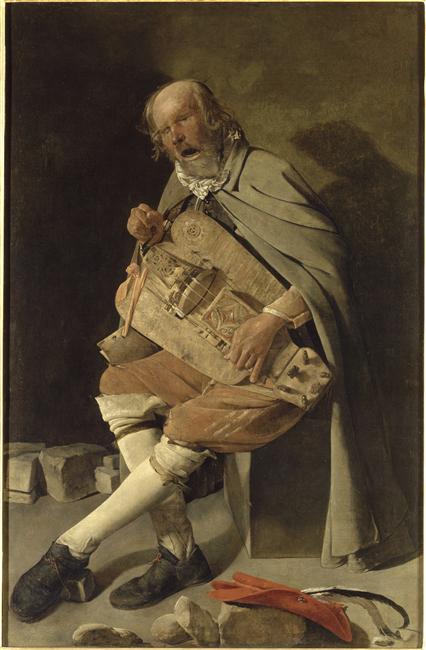
vielleur au chapeau
|
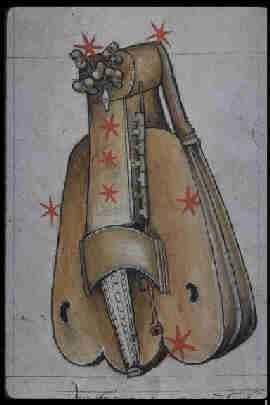
Extract
of Manuscrit du
Zodiaque (Lyon 15th century) where the instrument was
chosen illustrate the constellation of the Lyre.
The fact that the vielle was chosen show us the importance of
the instrument at this period. What
commonalities between Homer blind, going from town to town with his
lyre to sing his poems and blind vielle players of this time such as
Georges de la
Tour painted them.
Other
project: a symphony reconstructed according several sources
(for
example MS Psalterio Luttrel 1325 below). I tried to design the
keyboard as it was during the middle age and not to insert a keyboard
as it was invented during 18th century.
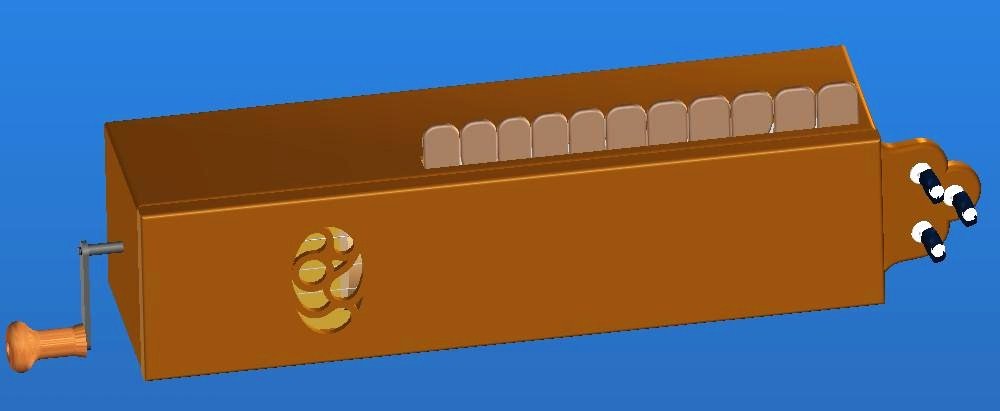
CAD view of symphony reconstruction
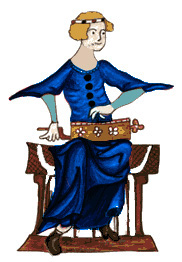
Symphony
MS
Psalterio Luttrel
1325
|
|
|